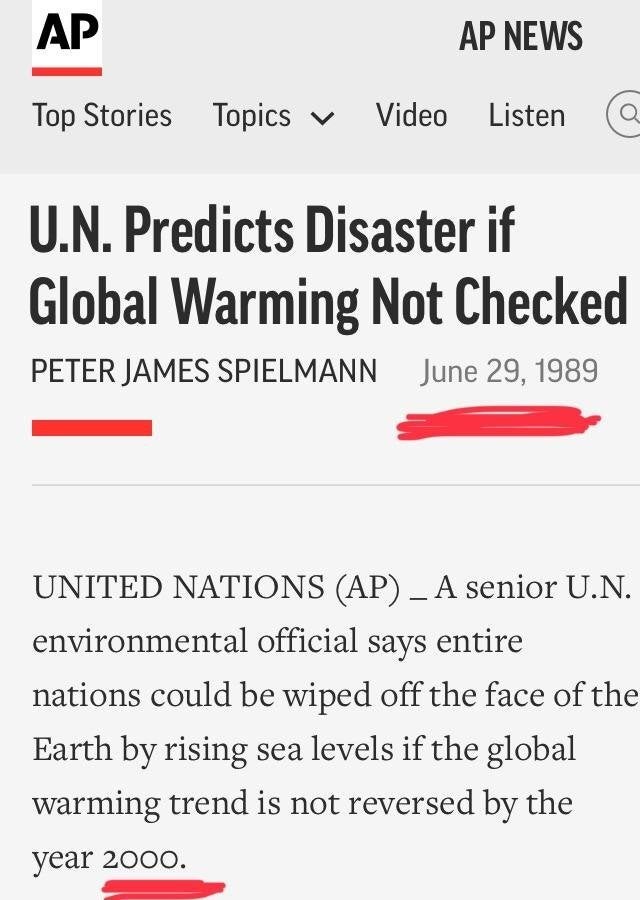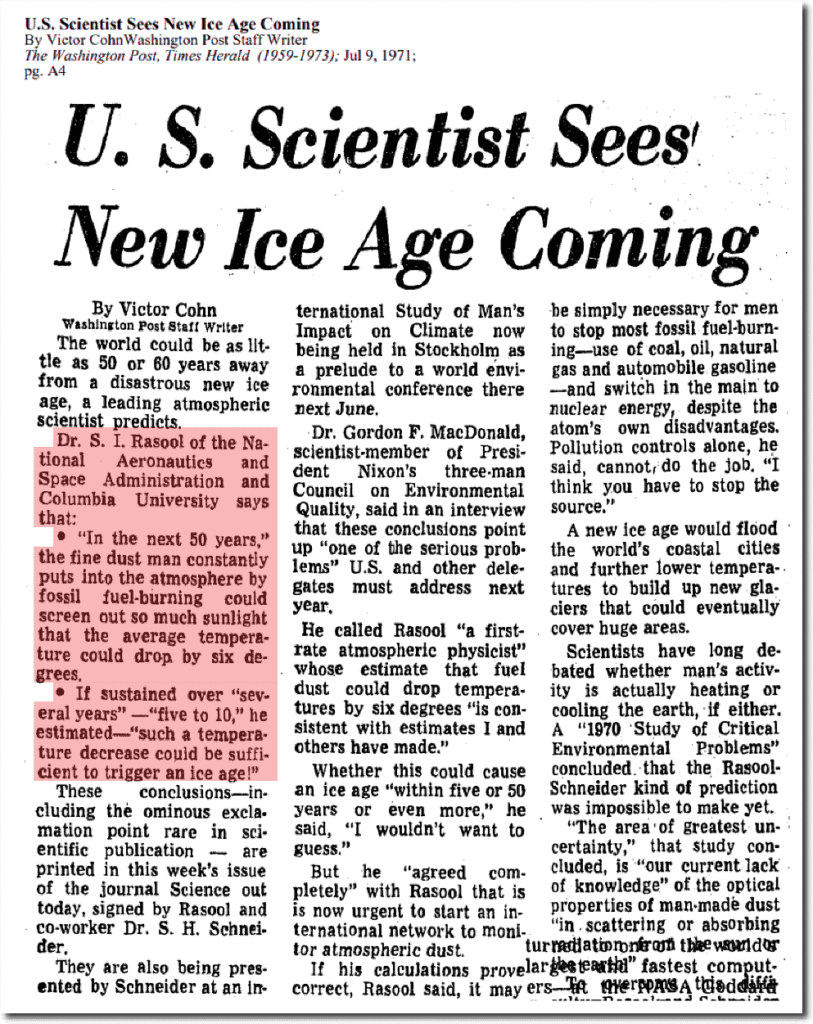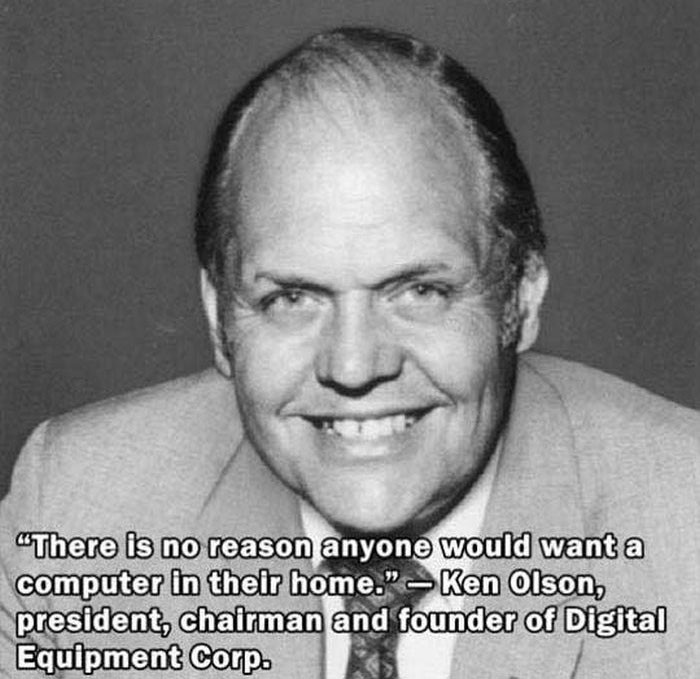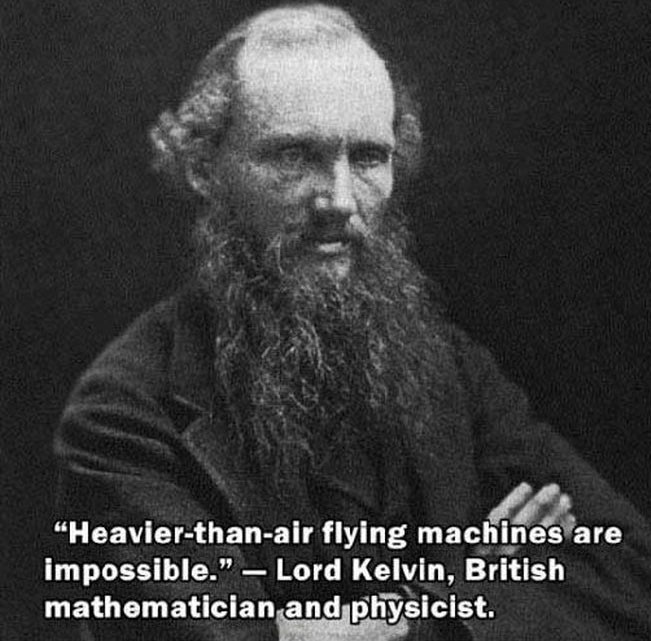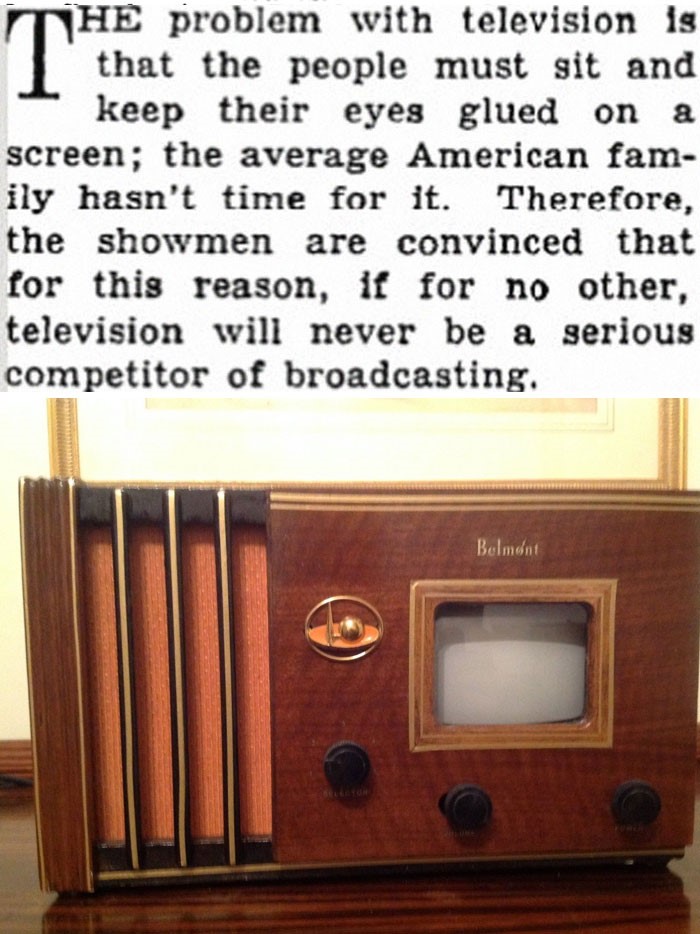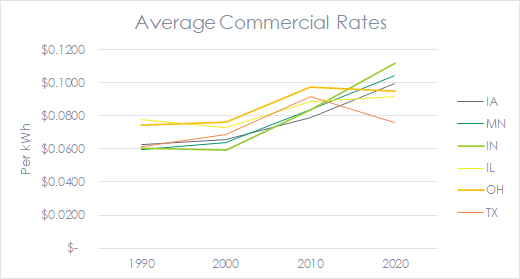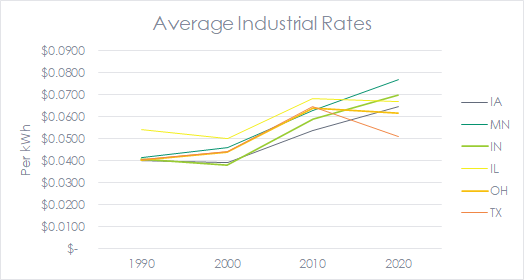
Predicting the future with infinite degrees of freedom is hard, especially when projected years into the future. A few years ago, Public Utilities Fortnightly posted an article about the accuracy of The Jetsons forecasting the future. William Hanna and Joseph Barbera got about half of it right, which isn’t bad for a 60-year projection. I researched this because I found an error in the PUF article that said there were no area codes in Jetson time (1962-1963). A quick online search indicates area codes started in the 1940s. Technologies from the Jetsons that we have today include moving walkways, treadmills, video conferencing, huge flat-screen projection TVs, smart appliances, electric eyes, machine thinking, smartwatches, and talent wars. However, no one has conquered Newton’s law, F=MA[1]; which is to say, we don’t have ubiquitous flying saucers for commuting to and fro.
That got me thinking, what about other predictions? Let’s look at a sample.
Notice how people predict beneficial things will never be invented, and an apocalypse is always right around the corner. My conclusion is, don’t bet against technology, but do consider physical constraints and limits. We don’t live in a world of cartoon physics.
Let’s look back a year at my predictions from Soothsayer Says to see how they turned out. I made five projections for matching electrical demand to supply as heavy doses of intermittent renewables shove kilowatts onto the grid. I made three predictions on the Covid. Uh-oh. Let’s take a look!
#1 Load Building
On a Ven diagram of electric-utility strategies for growth, load building and electrification are not the same circle, but there is a lot of overlap. There is a huge push for electrification, especially cold climate heat pumps, and to a lesser extent, heat-pump water heaters, which I will write about soon. Electric vehicle sales are also increasing but still at a sluggish pace on a market share basis.
Law and policymakers are finally changing their fuel-switching prohibitions to provide incentives for displacing natural gas or delivered fuel (fuel oil, etc.) equipment.
#2 Balancing Utility Profit and Electricity Prices
This topic depends on the market – regulated, mostly regulated, or deregulated. I recently read that over the past ten years, electricity price competitiveness flipped from Iowa to Illinois as the leader in cheap electricity. Commercial rates went from 10% advantage Iowa to 14% advantage Illinois. I thought I should look this up. Below, I post the results for commercial and industrial average prices for several states over the past 30 years, at 10-year snapshots, per the EIA. These include:
- Big renewable (wind) states: Minnesota, Iowa, Texas
- Deregulated states: Illinois, Ohio, Texas


I was recently in a demand response course and said, “Why would a poles and wires company want to do demand response? They make money by building stuff.” The expert’s answer was, “those days are over.” Well, alrighty then!
#3 Utilities Invest Behind the Meter
A year ago, I wrote that I don’t want to mess with certain things, like owning cable boxes, DVRs, and routers. I’ll lease those things from the cable company. The same thing should be available to electricity customers, delivered by utilities – storage, chargers, and even end-use equipment like heat pumps. As one example, Georgia Power will install, own, and operate the charging infrastructure behind the customer meter up to the charger, including the panel, switchgear, wiring, conduits, and disconnects.
#4 Self-Directed Demand Response
I’ll write more about this later, but I learned the three generations of demand response in the last month. The first generation, DR 1.0 (gag a little?), is what I called “grandpa’s direct-load-control switches” for cycling air conditioners. I wrote that we need demand and time-of-use rates for more than the largest commercial and industrial customers.
Demand Response 2.0 includes two-way communication, smarter equipment, behavioral/voluntary options, and real-time price visibility. ConEdison, for example, piloted aggressive time-of-use rates this summer. Ching! See page 2, AESP’s Q3 2021 magazine.
#5 Growing Pains and Cheese Moving
Changes create winners and losers, at least in the short term. They include things that are easy to demagogue. See #2. Fighting efficiency and demand management as resources is difficult among blockheads. “Why should we transfer wealth from these customers to those customers?” Let the “free market” take care of it. I think I read about this somewhere recently.
It works like this: everyone can pay less for a substation in need of upgrade by benefiting a few with energy efficiency and demand management, or everyone can pay more to upgrade it. A or B? You decide.
#6 Return to Social
I wrote that even hermits like me would rather get together in person with friends, colleagues, and acquaintances than remain with video calls forever. “Go ahead. Oh no, you go. {silence, simultaneous talk} I was just going to {interruption}.”
Yes, people are dying to get back to in-person conferences. Look for the top twelve conference call statements (like “You’re on mute”) in our annual desk calendars, which will arrive in mailboxes soon. If you don’t receive one by January 1st and would like one, give us a jingle!
#7 Utility Pinches
A year ago, I wrote, “In the next year, I feel the pinch of utilities to decrease costs for program implementation and evaluation.”
True. I don’t want to spread any ideas about demanding firstborns or extracting several pounds of flesh in contract negotiations, but you can read about used car negotiation strategies here.
#8 Field Work
Fieldwork would continue/resume for large commercial and industrial facilities. We did some field inspection of large C&I facilities in 2020 and early 2021, although it backed off for some utilities, especially for research and evaluation. Based on feedback from our SEM work, I’ll just say these customers are ahead of the curve in ditching the PPE. Per discussions with our engineering managers, we are back to unrestricted fieldwork.
How’d I Do?
By nature, utilities don’t move quickly because they have decades-long planning cycles. However, because renewable generation is here in large shares, and because lots of coal and some nuclear plants are shutting down very rapidly, change is coming fast compared to the usual 20-30 year utility timescale. Below I provide a status of these projections, many of which will span decades.
 Look for 2022 projections soon!
Look for 2022 projections soon!
[1] Force equals mass times acceleration, where acceleration can be gravity and force can be weight.

